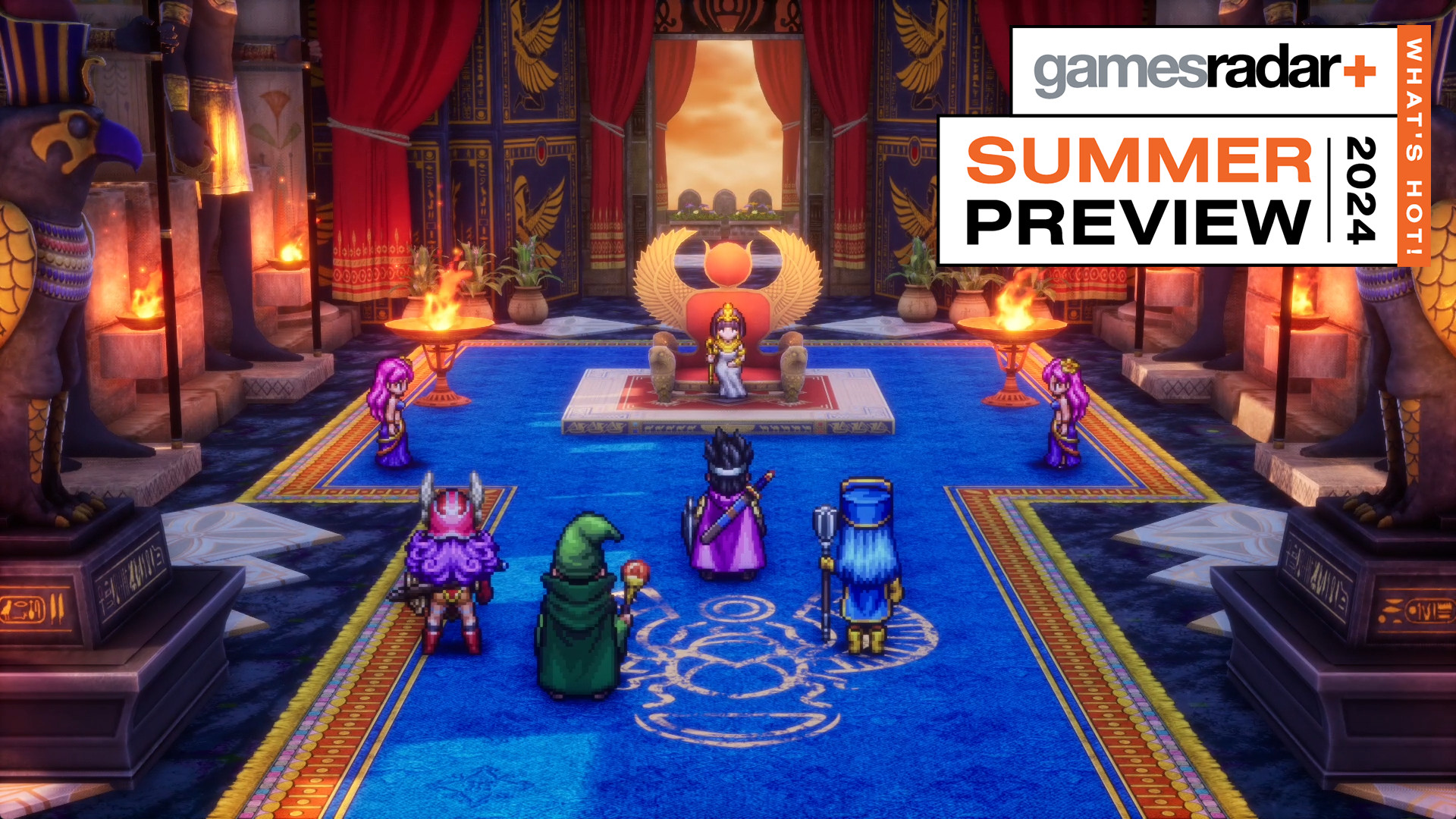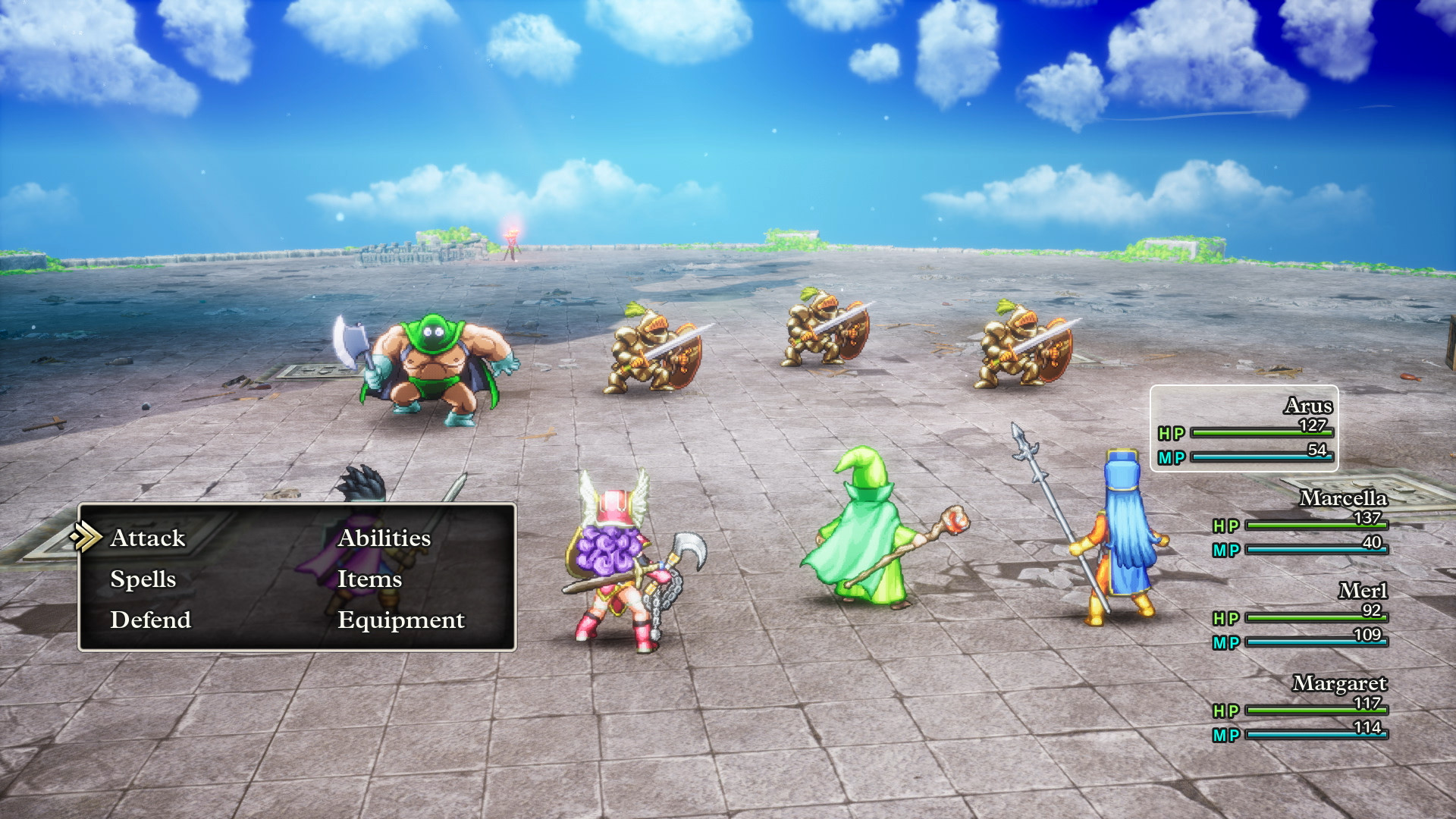
If there's any classic JRPG deserving of Square Enix's gorgeous HD-2D remake treatment, it's Dragon Quest 3. Fans have been salivating over the possibilities of this remake since it was first tentatively revealed three years ago, but now the wait is coming to an end. I played an hour of Dragon Quest 3 HD-2D remake behind closed doors at a Square Enix event during Summer Game Fest, and this is absolutely the definitive modernization that this legendary 8-bit RPG deserves.
If you've ever played a 2D JRPG before, you know the basics here: talk to some townsfolk, recruit a party, wander in an overworld map, fight random battles, then head back to town to spend the gold you've earned on new equipment so you can venture further out. The remake does not mess with that formula, but rather enhances it with more quality-of-life improvements than you can shake a legendary sword at.
Modern Dragon Quest series staples are here, like enemy names that change colors to indicate how much damage they've taken and the 'handy heal all' feature that lets you automatically heal your party with minimal wasted MP. You can now directly compare the stat boosts from equipment straight from the shop screen. You can now even use chimera wings to fast travel from anywhere, including inside buildings and dungeons, something characters break the fourth wall to remark on in-game as a notable modern convenience. There's now an auto save, and you can plunk down a manual save at any church – you don't have to hike all the way back to the king. You can turn up the battle speed to make grinding faster. All these little changes help to modernize Dragon Quest 3, but you won't mistake this remake for a truly modern RPG.
Old-school charm

Square Enix holds tight to the roots of what makes Dragon Quest 3 such a classic. There's still plenty of grinding through random battles, occasionally punctuated by light story sequences that are only partially spruced up with the addition of small bits of voice acting. This is a properly old-school experience, just without the frustration you'd expect from an NES RPG.
The biggest departure from that original design is the addition of quest markers, which will point you directly on the world map to where you need to go next. In the original, you'd hear hints from NPCs to help you figure out your next objective, but now you're directed straight toward the most helpful bit of dialog, and once triggered, you're then pointed to the next exact location. Wandering the world map endlessly in search of the hint you missed is one of the most frustrating parts of old RPGs, though I can't help but wonder if this solution might make the game a little too straightforward.
The HD-2D visual treatment is the star of the show here, and it looks fantastic. It's not as flashy as in, say, Octopath Traveler, but the 3D backgrounds give a lot of life to every location. A particular highlight is the way your party pulls out torches at night and in dark caves, leaving a gently flickering light to illuminate the world around you.
Square Enix says it decided to start with Dragon Quest 3 because it's a prequel – and yes, it's a standalone game, contrary to rumors that an entire remake trilogy was on the way. The idea that this is a starting point does leave open the door that further remakes may come, but nothing's been confirmed as yet. But if the rest of the Dragon Quest 3 remake proves to be as smooth and polished as the bit I got to play, then I'm already desperate for more.
Looking for the best JRPGs out there? Just follow that link.







